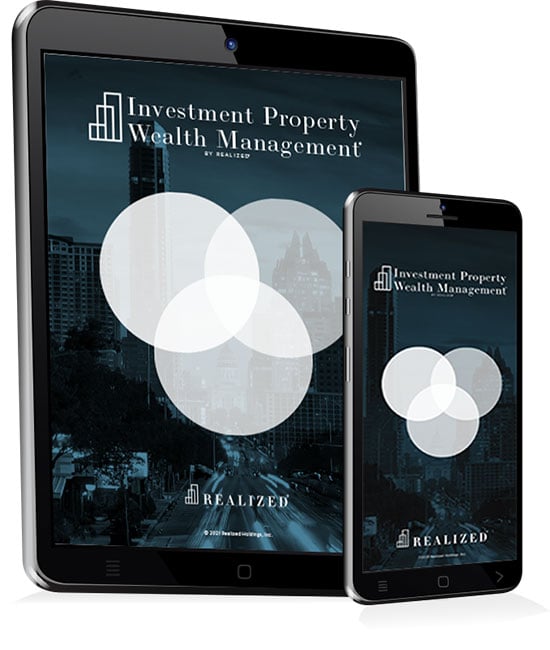
Coronavirus has caused a stir in the international socioeconomic climate, wrecking havoc both in the form of lives and economies since its widespread discovery early 2020. In this blog, we take a look at its potential impact on several real estate sectors — namely healthcare, hospitality, and senior living.
This blog is the second of a two part series — and you can read the first one here. Additionally, we have covered retail, student housing, and multi-family in separate blogs. Click on each link to read more.
Healthcare
The impact of the COVID-19 crisis on healthcare and medical office building (“MOB”) properties will be dependent on the primary use of the properties. Unlike the majority of traditional office tenants, medical professionals have a very difficult time working from home and may be forced to close down their operations for the foreseeable future. The types of medical tenants most at risk in this situation include dentists and optometrists, which require in-office patient visits to generate revenue. Tenants that are a part of a larger healthcare consortium may be able to withstand the loss of revenue for longer, but small, private practices face near-term risks.
Without any revenue, tenants may be forced to request rent relief or abatement, causing landlords and owners to potentially miss their debt payments. Most lenders have indicated a willingness to work with their borrowers during this crisis to avoid foreclosure, but some lenders may be less flexible. The extent of potential downside risk investors in these types of assets face is dependent on the specific tenants and the lender.
Healthcare facilities like dialysis clinics and treatment centers are considered “essential businesses,” meaning they are required to stay open and operational during this crisis. While tenants will still be forced to adjust their business to comply with social distancing guidelines, assets with these types of tenants will continue to perform and generate cash flow for investors.
Hospitality
Hospitality will be the hardest hit real estate asset class, and it has already experienced a sharp decline in performance in the past few weeks. According to CBRE, U.S. hotel occupancy was down 56% for the week ending March 21 compared to the same week last year. With high-end hotels averaging less than 10% occupancy, thousands of hotels across the country have closed and begun laying off their employees. Typical demand drivers like corporate travel and conferences, music festivals, and other cultural events will be non-existent until the current crisis subsides.
Hospitality workers are likely the largest beneficiary of the CARES Act. Hotel operators will also benefit from the Act’s retention stimulus, which will help them keep essential staff during the crisis while enabling them to reactivate furloughed employees once the threat of COVID-19 has passed. CBRE projects that these closures likely will last for many more weeks and full-year revenue per available room (“RevPAR”) is expected to drop almost 40% in 2020 before starting to recover in 2021. The second quarter of 2020 is forecast to bear the brunt of RevPAR losses, with year-over-year declines estimated to reach 70%.
For most hotels in the country, only a 15% drop in revenue would be enough to push a hotel into negative cash flow territory, which is why hotels are laying off employees and cutting expenses to stay afloat as long as possible. Due to the short-term stays at hotels, it is the first asset class to feel the effects of the current crisis. Looking towards the second half of the year, there is potential for a rapid rebound as activity returns to normal levels. However, as seen after previous recessions and human-impact events (e.g. strikes and terrorist attacks), there is a risk that the return to normalcy is protracted. Destinations considered epicenters of the outbreak, or that responded ineffectually, may see a prolonged downside.
Senior Living
In light of COVID-19, senior housing is being presented with its own unique set of challenges, whether it be independent living, assisted living, or memory care facilities. Being a property type that specifically caters to a high risk demographic presents a fragile situation for operators, as operators attempt to avoid events similar to what occurred in the Life Care Center nursing home in Kirkland, Washington. With nearly 29,000 assisted living facilities across the country caring for 800,000 residents, however, the law of averages suggest that a similar event occurring may be inevitable. To mitigate this risk, operators are taking stringent measures, which is proving to be a challenge for the property type as a whole.
Although privately owned and operated, senior living communities are a vital part of the healthcare system. Tasked with providing around-the-clock care for residents, senior living communities ensure older individuals have a safe place to live, while providing access to the medical facilities or resources these individuals may need in their everyday lives. Although profitable, this level of care leads to high operating costs, which unfortunately is the origin of this sector's issues.
Between stocking up on masks and respirators, monitoring residents for symptoms, implementing increased cleaning protocols, hiring and training additional employees, and paying overtime, costs are inevitably rising at senior living communities. According to James Balda and David Schless, two executives in the senior living industry, the cost of maintaining high quality care in these communities has increased 73% for COVID-19 free communities, and 103% for COVID-19 positive communities. Further, the two go on to discuss that labor costs have increased 8% and 18% for these communities as well, respectively.1 With some communities accepting no new residents, revenues may also be declining, which is hurting these property’s bottom line.
With a lack of government support or funding, effective cost management is a pipe dream. And whether the operator likes it or not, they have a fiduciary responsibility to their residents, as resident attention goes beyond unit maintenance and making sure community amenities are open. These communities are tasked with ensuring their residents don’t end up in the hospital, which has proved to be financially taxing in the current economic climate.
With increased expenses, is there anything operators can do? The answer is yes, and the solution is going to be centered around why this property type has been so attractive historically: tenant fundamentals.
Being older typically means fewer lifestyle changes. As multifamily occupancy fluctuates due to tenant lifestyle changes in marital status, employment, and income, tenants of senior living communities are more entrenched by the sheer fact that these factors are not changing, or changing less often. Along with this, moving to a senior living community can be needs-based, as an individual may need the level of care present at an assisted living or memory care facility to live. These factors have historically led to a stickier tenant base, which will prove to be important in the coming months.
Similar to the sector’s residential counterparts, multifamily and student housing, value-add initiatives may take a backseat in operations as cash management becomes increasingly important. The key will be maintaining occupancy, and more importantly, that residents feel safe and healthy. Operators and communities that will be able to achieve both effectively will have the best chance of weathering the storm.
- Retrieved from COVID-19 could have 57 billion impact on senior living
Conclusion
We know that times of uncertainty such as the one we are in right now can produce a lot of fear and panic. We are here to help you navigate those waters, and manage your real estate investments in a way that helps them — and you — weather this storm. Please reach out to us with any questions or concerns you may have. Our Directors of Investment Property Wealth Management are ready to assist you in any way.
Give us a call at 877-797-1031 or email us at info@realized1031.com.
This material is for general information and educational purposes only. Information is based on data gathered from what we believe are reliable sources. It is not guaranteed as to accuracy, does not purport to be complete and is not intended to be used as a primary basis for investment decisions. It should also not be construed as advice meeting the particular investment needs of any investor.
This material represents an assessment of the market and economic environment at a specific point in time and is not intended to be a forecast of future events, or a guarantee of future results. Forward-looking statements are subject to certain risks and uncertainties. Actual results, performance, or achievements may differ materially from those expressed or implied.
Equity securities offered exclusively through Realized Financial, Inc., a registered broker/dealer and member of FINRA/SIPC ("Realized Financial"). Investment advisory services are offered through Realized Financial, Inc. a registered investment adviser. Realized Holdings, Inc. has a minority ownership interest in Realized Financial, Inc.



